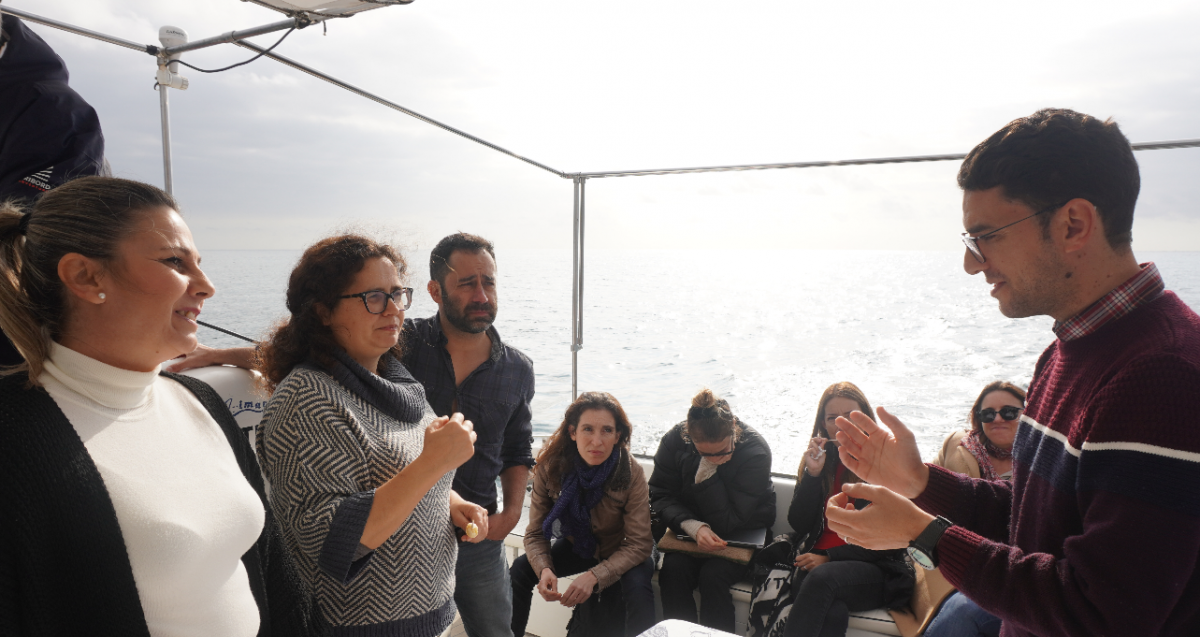Forest sector responds to pandemic: Insights from Cameroon, Mexico, Nepal and South Korea
From healing forests to the landscape approach, prominent forest professionals from Cameroon, Mexico, Nepal and South Korea address some of the immediate challenges of the COVID 19 pandemic and share insights on strategic responses and innovations.

Photo: Luciana Ludlow Paz / IUCN
During the COVID19 Forestry Webinar Week hosted by the Food and Agriculture Organization of the United Nations, forest sector perspectives from around the world provided compelling insights into the different ways of responding to the pandemic. At the opening high-level event headlined by: Mr. Pamphile Ntanga, Director of FECAPROBOIS, a Cameroonian federation of small and medium forest enterprises; Mr. Leon Jorge Castaños, Director General of Mexico’s National Forestry Commission; Ms. Bharati Pathak, Chair of the Federation of Community Forestry Users of Nepal; and Mr. Hyun Park, Assistant Director General of the Forest Policy and Economics Department, National Institute of Forest Science, South Korea shared a number of interesting observations and strategies.
Moderator, Stewart Maginnis, IUCN Global Director of the Nature-based Solutions Group, set the tone of the discussion by pointing out that even while governments are still struggling to manage the exigency of COVID 19 as an immediate health crisis, thoughts are already turning to the imminent economic challenges that will follow. He noted that we have seen the forest sector used to help to create jobs – including in hard-to-reach rural areas in response to past crises – in both rich and emerging economies alike. And it can be efficient – in the United States during the aftermath of the 2008 financial crisis the forest sector in some states was able to create up to six times the number of jobs that the same investment was capable of supporting in other sectors such as car manufacturing.
Irrespective of the uncertainty that currently surrounds the evolution of the pandemic and the aftermath, we know that healthy forests and on-farm trees are a constant source of life, resilience and well-being. – Stewart Maginnis
Impacts of COVID-19 on the forest sector
In Cameroon, like in many places around the world, the impact of the pandemic hit the job market due to an increase in the price of materials coupled with reduced demand for forest products, therefore forcing a reduction in employment opportunities. In Mexico, up to 40% of income from forest products has been lost. Related to this is a blow to tourism (which incentivises forest conservation and sustainable use) and to value-added forest industries, mostly steered by local communities.
Ms. Pathak added that many rural communities in Nepal are seeing a return migration by those who had previously left. Although this adds pressure to demands on natural resource, it also provides an opportunity to utilise the skills of the people returning to their communities. Some returnees even have knowledge that is relevant to working the land and using the forest strategically.
Mr. Castaños noted that many of the issues that existed in Mexico before the pandemic were exacerbated as a result. For instance, illegal logging worsened due to diminished government surveillance, pressures to access cheap resources, and a lack of interest to invest in certified industries. The general lack of a holistic vision of the landscape that embraces forests and agriculture in a cross-sectoral manner will remain a challenge if the forest sector is not considered as an essential sector part of the recovery responses.
Solutions
Healing forests and youth
Mr. Park suggested finding a new way of looking at the forest sector, adding that solutions need to be innovative and depart from the traditional views of the forest sector in order to respond to the global health crisis. He advocates for new models that connect nature with health, resilience and sustainability. Production of traditional goods in a sustainable way is the current paradigm, which can be partially replaced by offering intangible goods valued by society. In Korea, for instance they are introducing technologies to reinvent forest surveys and management, drawing the interest of younger generations to the sector. A specific application of this vision is evident in the interface of forests and public health where investment in forest landscapes are made to benefit peoples’ physical and physiological health. The concept of healing forests can encourage a new generation to invest, protect, restore and manage forests. At the same time, this vision will generate a new field of experts, creating jobs. See World Forestry Congress for more on this line of thinking.
The importance of involving youth in the forest sector was echoed by Mr. Ntanga, who added that the focus should also be on facilitating young entrepreneurship in the sector.
Landscape approach and smallholder agroforestry
Mr. Castaños also called for a shift to a territorial focus (rather than sectoral) and comprehensive planning that actively restores forests, including multi-sectoral approaches that can be sustained in the long-term. He also acknowledged that as the pandemic lessens, going back to work in forest industries will need to be done in a safe manner that does not jeopardise the health of rural communities.
Ms. Pathak knows the realities of rural communities well. She mentioned the importance of agroforestry as a bridge between forests and agriculture, and provided important additional revenue to smallholder farmers. Support for agroforestry helps community groups and smallholders to solidify their capacity to be entrepreneurs and to better integrate into value chains, somewhat easing the economic burdens of COVID 19.
60% of forest agencies respond to COVID 19
Mr. Maginnis finished on a positive note by pointing out that many forest agencies are already positioning themselves to address both the opportunities and challenges of the current situation. FAO recently surveyed countries’ Heads of Forestry. Highlights from the 30 responses show that approximately 60% of forest agencies are developing response plans to COVID 19 and implementing some associated actions. Clearly, the four participants in this discussion are among those who have been giving the COVID 19 recovery in the forest sector some deep thought.
— Story by Adriana Vidal and Corbett Nash, IUCN



